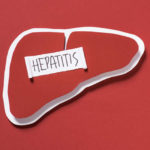Hepatitis C Hope
The following article is from Pharmaceutical Business Review. I don’t know why, exactly, but I love it when these guys talk about Hepatitis c treatment as a business. Maybe it is because I figure their monetary interest fuels their desire to find better and better treatments for Hepatitis c.
What we can discern from reading between the lines in this industry report is that truly new and exciting treatments may still be 5 or six years off. While it is not tomorrow, it is also not decades away. I find that encouraging.
Hepatitis C: hope on the distant horizon
24 Jun 2005, 17:24 GMT – While progress in the hepatitis C virus market is expected to be slow until 2011, the launch of polymerase and protease inhibitors thereafter is expected to fuel rapid growth. The market is expected to exceed $4 billion by 2012 and this growth may even result in a new treatment paradigm.
Driven by a favorable epidemiology and high unmet medical need, the hepatitis C pipeline is both rich and varied. The chronic hepatitis C (CHC) treatment market is currently dominated by market leaders Roche and Schering-Plough, which market both components of the CHC standard of care – a combination of pegylated interferon (Peg-IFN) alfa and ribavirin (RBV).
Historical growth in the hepatitis C market has been high, with a compound annual growth rate (CAGR) of 28.5% experienced between 1999 and 2003. This was mainly fuelled by the launch of RBV in 1998 and the second-generation interferons, Peg-IFN alfa-2b and -2a in 2000 and 2002, respectively – both of which significantly improved the efficacy of therapy.
However, treatment outcomes following Peg-IFN plus RBV combination therapy are highly heterogeneous and depend on the viral genotype with which a patient is infected. Indeed, sustained viral response (SVR) rates in the ‘easy-to-treat’ genotypes 2 and 3 can be up to 88% of cases. In contrast, less than half of those who harbor hepatitis C virus (HCV) genotype 1 successfully respond to therapy. Significantly, genotype 1 accounts for between 70 to 75% of the patient pool in the West and, therefore, current therapy meets less than 50% of the CHC medical need.
This has led to the accumulation of patients that have failed first-line therapy with the current standard of care, known as non-responders, and patients who responded to therapy but subsequently relapsed. Moreover, as a result of the slow rate of HCV disease progression, the wave of patients seeking treatment is still gaining momentum and expected to peak from 2014 onwards.
Incremental improvements in short term
The combination of high patient potential and significant medical unmet need have attracted big pharma and small biotech alike, creating a pipeline consisting of 28 drugs in clinical development and a range of potential drug candidates at the preclinical stage. However only 14% of these molecules are currently in phase III, with none of these specifically targeting the HCV particle per se. Instead, they act by enhancing the host antiviral response and therefore, no major paradigm changes are expected to occur in HCV therapy for at least the next five years.
Research by Datamonitor found that among the three drugs that are closest to market, only Valeant’s RBV follow-up drug viramidine is perceived as a key addition to HCV therapy. The drug has similar efficacy to its predecessor but differentiates itself based on its more favorable toxicity profile.
The highest hopes for effective future HCV therapy are being pegged on the small molecules able to specifically interfere with HCV replication, in particular the NS3 protease inhibitors. This new paradigm was first highlighted as a realistic goal by Boehringer Ingelheim (BI), whose protease inhibitor BILN 2061 demonstrated an unprecedented drop in viral load after only two days of therapy. However, the enthusiasm was largely dampened when BI was forced to suspend further development of the drug due to cardiac toxicity in animals.
With the most developed protease inhibitor – Vertex/Mitsubishi’s VX-950 – still at least seven years from reaching the market, hopes are now centered on the polymerase inhibitors, most notably Idenix/Novartis’s NS5B polymerase inhibitor valopicitabine (NM283). However clinical development has also led to general disappointment when early-stage trials showed only moderate reductions in viral load with NM283 monotherapy. This led to subsequent clinical trials being designed for combination therapy with Peg-IFN, with the end goal of potentially replacing RBV with NM283.
Is future therapy without an interferon backbone realistic?
Early results from the NM283 clinical trials raise the question about the future role of Peg-IFN in HCV therapy: will it remain the backbone for several years to come or eventually fade from use? Some people believe that future HCV therapy is more likely to consist of combination therapy, based on Peg-IFN plus one or more specific antivirals. Others take a more optimistic view nurtured by faith in that antivirals could be capable of curing HCV infection on their own.
Given the consequences of untreated HCV infection, which include liver cirrhosis, hepatocellular carcinoma, liver transplant and death, many physicians will require convincing data before replacing a proven therapeutic option with antiviral monotherapy. As such, Peg-IFN is expected to retain a relatively strong market presence, despite the plethora of drugs in the pipeline, resulting in a CAGR of 9.9% for the interferon class between 2004 and 2013.







